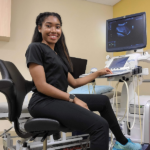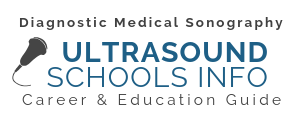You’ve put in the work getting your prerequisites done, and you’ve submitted your applications to your ultrasound school(s) of choice. Going through this process, you’ve likely learned that acceptance to a sonography program is a challenging process as many schools only accept a handful of students each year.
 In this excerpt from her book “Diagnostic Medical Sonography – The Definitive Guide to Planning Your Career”, author Samantha Callis will help you understand what it means when a program indicates that it’s “selective admission”, and what these programs look for in their applicants. This will help you improve your chances of being admitted.
In this excerpt from her book “Diagnostic Medical Sonography – The Definitive Guide to Planning Your Career”, author Samantha Callis will help you understand what it means when a program indicates that it’s “selective admission”, and what these programs look for in their applicants. This will help you improve your chances of being admitted.
Apply to a Program That Meets Your Needs and Goals
First you must apply and be accepted to an institution of higher education.There are several types of schools, including but not limited to community colleges, four-year public schools, four-year private schools, two-year schools, and vocational/trade schools. Admission requirements differ based on the school you are interested in. CollegeBoard is an excellent resource for further information about higher education, as is seeking information from high school counselors and individuals in the profession you are interested in pursuing
Why do Schools Accept so Few Students?
Sonography programs are often limited to admitting a certain number of students. Accreditation standards give programs guidance about the appropriate resources required to provide a high-quality educational experience that results in a competent healthcare provider. Clinical site availability, number of teaching faculty, campus laboratory space and equipment resources can only accommodate a certain number of students at a time.
What Does “Selective Admission” Mean?
Requirements for programs accredited by the Commission on Accreditation of Allied Health Education Programs
CAAHEP-accredited programs must have a one-to-one staff-to-student ratio in clinical educational experiences. This means if there are three students in a sonography department at a clinical site, there must also be three supervising sonographers. For these reasons, sonography programs are often called “selective admission programs.” This means you must complete a secondary application process in addition to the institution of higher education. Once accepted, you would then begin coursework specific to the DMS studies resulting in the certificate or degree offered by that program. Acceptance to an institution of higher education is not a guarantee of admission to a selective admission-based sonography program. In fact, this is not uncommon for medical education programs!
For example, Princeton Review noted a 41% acceptance rate for medical students intending to become physicians in 2022-2023. It is certainly intimidating, but careful research and planning can improve your chance of success in being admitted into the program you desire.
How do sonography programs determine who is admitted?
This is often unique to each program, but may include some of these common elements:
• Minimum GPA to apply
• Interview or pre-admission conferences with the school
• Written statements
• Observation, volunteer, or work experience in healthcare
• Science-based GPA
• Mandatory information sessions
• Other evidence of research related to the profession
• Standardized exams (ACT, SAT, etc.)
• TOEFL if applicable
Sonography programs may require a combination of the above admission components to be completed before a specific deadline yearly, or possibly multiple times per year, depending on the structure and resources of the program.
Make Your Application Stand Out From the Rest

Sonographer DruAusten Fields, RDMS, RVT, shares her top advice for preparing and submitting your application.
Learn what program directors are looking for as they evaluate the many and whittle down to the few that they will accept for admittance.
What Happens Next?
Candidates will be reviewed by the program (often via a committee) and the top students will be identified to fill the available spots. Then, students are notified of acceptance or non-acceptance into the program. Students who are not admitted to a sonography program may often apply again during the next cycle or choose to apply to a different program. Next steps for admitted students include accepting a position in the program, meeting with a sonography faculty advisor, registering for sonography coursework, completing program orientations, submitting proof of required immunizations for clinical experiences, paying program-specific fees if applicable, and obtaining uniforms and identification for laboratory and clinical coursework.
